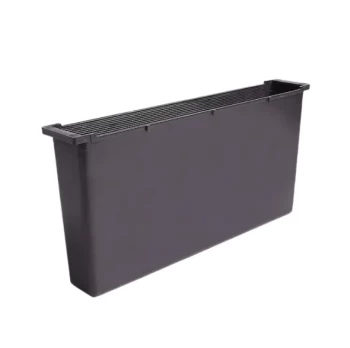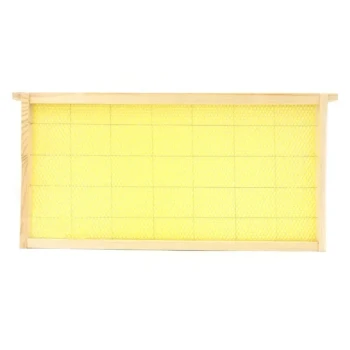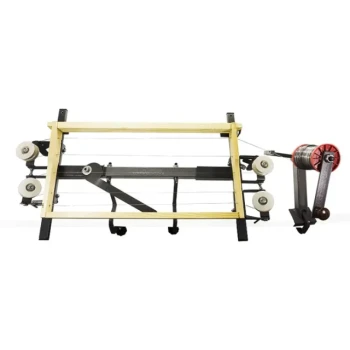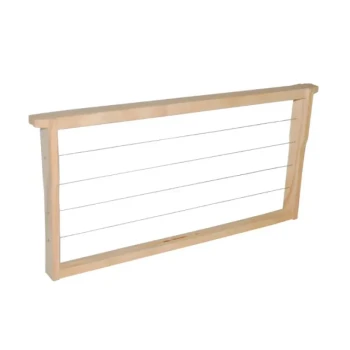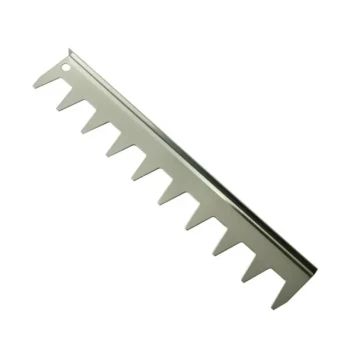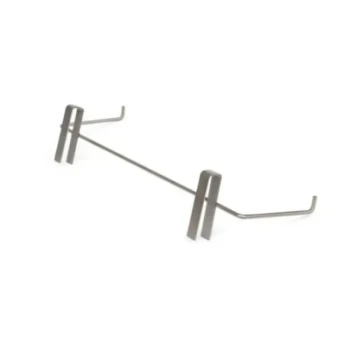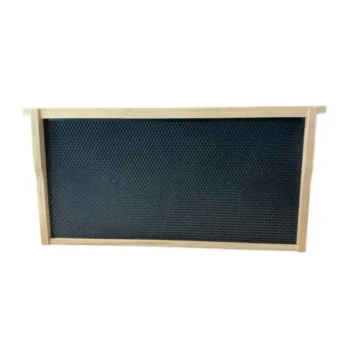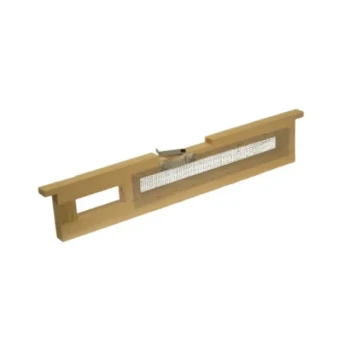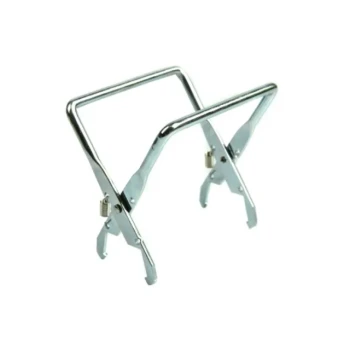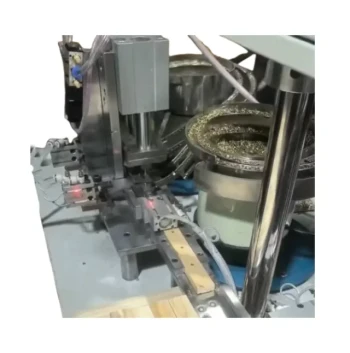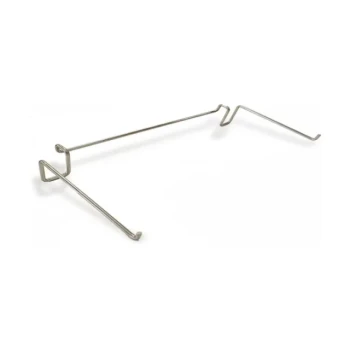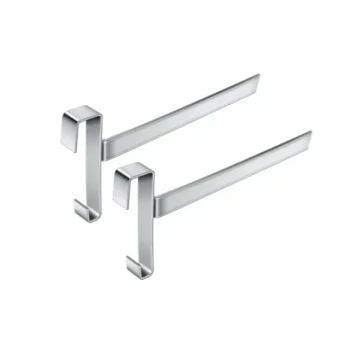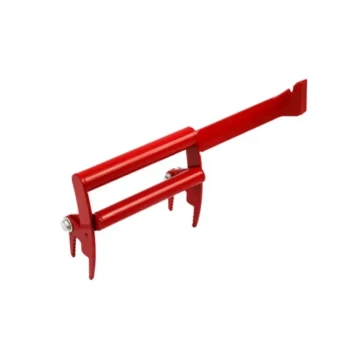The standard dimensions for Langstroth beehive frames are defined by their height, which varies by type. A deep frame is 9 1/8 inches high, a medium frame is 6 1/4 inches high, and a shallow frame is 5 3/8 inches high. Critically, all three sizes share a standardized top bar width of 19 3/16 inches to ensure they fit within any standard Langstroth hive body.
While the measurements are standardized for universal compatibility, the choice between deep, medium, and shallow frames is a strategic decision. It directly impacts hive management, lifting weight, and the separation of the queen's brood from harvestable honey.
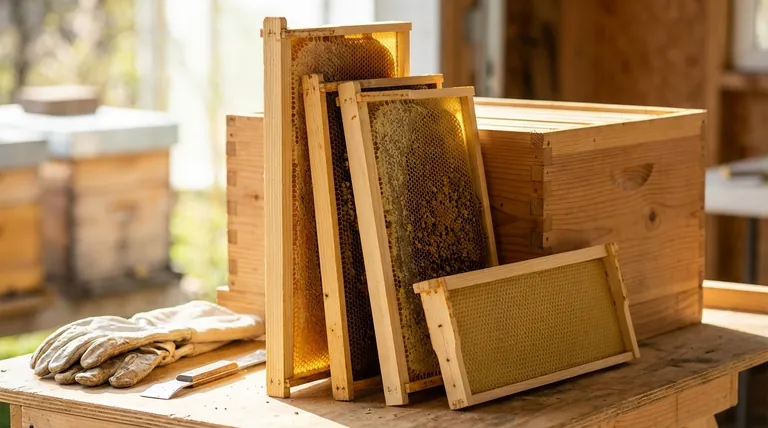
The Role of the Frame in the Hive
A Langstroth hive is a system of vertically stacked boxes. The frames are the essential, removable structures inside these boxes that allow for modern beekeeping.
A Structure for Honeycomb
Frames provide the internal structure upon which bees build their wax honeycomb. This comb is used to raise young bees (brood) and to store honey, pollen, and nectar.
Because the frames are removable, a beekeeper can inspect the colony's health, manage its growth, and harvest honey without destroying the hive itself.
Foundation vs. Foundationless
Frames can be equipped with a sheet of foundation, typically made of wax or plastic, which is imprinted with a hexagonal cell pattern. This guides the bees to build straight, even comb.
Alternatively, some beekeepers use foundationless frames, which encourages the bees to build their comb with natural cell sizes, though it requires more careful management to prevent cross-combing.
Deconstructing the Standard Dimensions
The standardization of Langstroth equipment is its greatest strength, allowing beekeepers to mix and match components from different manufacturers. This standardization hinges on three key frame sizes.
Deep Frames: 9 1/8"
The deep frame is the largest of the three. Its significant height provides a large, uninterrupted area of comb.
This makes it the standard choice for the lowest boxes in the hive, known as the brood chamber, where the queen lays her eggs and the colony raises its young.
Medium Frames: 6 1/4"
Often called "Illinois" or "Western" supers, medium frames offer the most versatility. They are lighter than deeps but still provide substantial space.
Many beekeepers use medium frames for honey supers—the boxes placed above the brood chamber for honey storage. Some even run entire hives with only medium-sized boxes and frames to simplify their equipment.
Shallow Frames: 5 3/8"
Shallow frames are the lightest option. They are used almost exclusively for honey supers.
Their smaller size means a box full of honey is significantly easier to lift and handle, making them a popular choice for comb honey production or for beekeepers who wish to minimize physical strain.
Understanding the Trade-offs
Choosing a frame size is not just about measurements; it's about balancing the needs of the bees with the physical capabilities and goals of the beekeeper.
The Critical Factor of Weight
The most significant trade-off is weight. A shallow super full of honey might weigh 30-40 pounds. A medium super can be 40-50 pounds.
A deep box, however, when filled with brood, pollen, and honey, can easily exceed 80-90 pounds, making it extremely difficult for many people to lift safely.
Brood Chamber Management
Using a deep frame for the brood chamber allows the queen to establish a large, solid laying pattern, which is excellent for colony buildup.
However, using two medium boxes for a brood chamber achieves a similar result while keeping the individual components lighter. This also allows for total interchangeability of frames throughout the hive if you only use one size.
Honey Harvesting Efficiency
Medium and shallow frames are far more practical for honey harvesting. Their lighter weight makes them easier to remove from the hive and transport.
They are also easier to manage in the extraction process, whether you are using a centrifugal extractor or the crush-and-strain method.
Making the Right Choice for Your Goal
Your hive management strategy will determine the best frame combination for your apiary.
- If your primary focus is a traditional, robust brood nest: Use deep frames in your lower brood boxes to give the queen a large, unbroken area for laying.
- If your primary focus is simplicity and interchangeable parts: Standardize your entire operation on medium frames for both brood and honey.
- If your primary focus is minimizing heavy lifting: Use medium or shallow frames for all your honey supers to ensure they are manageable when full.
Ultimately, selecting the correct frame dimensions is the first step toward building an efficient, manageable, and productive beehive.
Summary Table:
| Frame Type | Height (Inches) | Top Bar Width (Inches) | Primary Use |
|---|---|---|---|
| Deep | 9 1/8" | 19 3/16" | Brood Chamber |
| Medium | 6 1/4" | 19 3/16" | Brood or Honey Super |
| Shallow | 5 3/8" | 19 3/16" | Honey Super |
Ready to build a more efficient and productive apiary?
At HONESTBEE, we supply commercial apiaries and beekeeping equipment distributors with high-quality, standardized Langstroth frames and hive components. Our wholesale-focused operations ensure you get the durable, compatible equipment you need to optimize hive management and honey production.
Contact HONESTBEE today to discuss your wholesale needs and let us help you lift your operation to the next level.
Visual Guide

Related Products
- Professional In-Hive Bee Feeder HONESTBEE Frame for Beekeeping
- Mini Desktop Bee Hive Frame Forming Making Machine
- Assembled Wooden Bee Frames with Beeswax Foundation Ready to Use by HONESTBEE
- Professional Bee Frame Wiring Tool with Integrated Tensioning System by HONESTBEE
- HONESTBEE Wired and Assembled Wooden Bee Frames Foundation for a Thriving Hive
People Also Ask
- What is a frame in a Langstroth style beehive? The Key to Modern, Manageable Beekeeping
- How do I keep bees from drowning in my frame feeder? Essential Tips for a Safe Hive
- What are the advantages of using frames in a Langstroth hive? Achieve Superior Hive Management and Honey Production
- Where should a bee feeder be placed? The Essential Guide to Hive Safety & Efficiency
- What are the two most popular types of honey bee feeders? A Guide to Frame and Bucket Feeders
